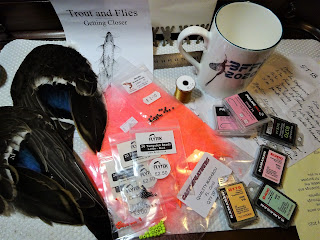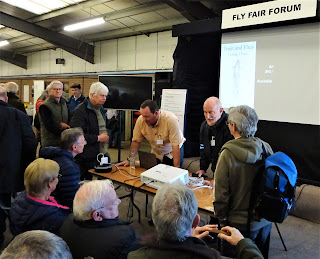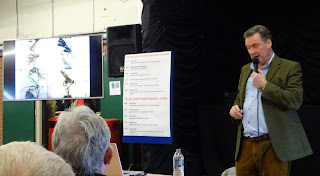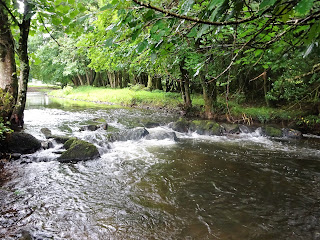Ed 6 BFFI 2020
The BFFI 2020 was, in a word, excellent. The trades, fishing and tying’s great and good, and enthusiastic hordes combined to make what I thought was certainly the best I’ve seen, (no, I haven’t been every year, but I try). I have never experienced such a long queue with the show having been open for an hour or more.
I shouldn’t really have been surprised, what with people like the inestimable Charles Jardine present, and surely a living legend; not tying or demonstrating casting today, but showcasing his incredible art, such as this pen and ink:
Tiers’ Row(s) was as fascinating as ever, including many new faces. The ‘clinics’ were well attended, and the trades seemed to be enjoying good business. I bought beads and hooks to replace used stocks, had three pairs of tying scissors professionally sharpened, obtained a matched pair of Mallard wings, plus more new tying materials to try.
Well, what, exactly, is “enough”?
But what made it a stand-out were the insightful, thought-provoking lectures; I selected four from the programme, and they were each absolutely ‘on the money’.
First was a presentation “Trout and Flies, getting closer” by Peter Hayes and Don Stazicker, a synopsis of their E-book of the same name, the result of four years’ (so that’s eight man years) centred upon state-of-the-art camera and enhanced, advanced computer imagery that digitisation has allowed. Seeing the true detail of trout feeding was astonishing, and among other things, destroyed the myth that rise forms are an indicator of what the trout are actually feeding on. Then there were the images of how insects really look, on the surface and beneath, illustrating that the slavish symmetry us tiers strive to replicate just does not exist in the aquatic environment, save possibly for the fully-formed and free-of-shuck, newly emerged up-wing on the point of take-off, but that actuallylasts for just one or two seconds, yet we spend an age at the vice tying them!
..
My next selection was Robert Smith’s “North Country Spiders – a journey through Tradition”, through which we learned of the familial grass-roots of locally tied patterns spreading through inter-marriage of families into new, local communities, leading to an exponential increase in pattern variation, hence the number of ‘traditional spiders’ we see today. The real eye-openers were the bunkum of nineteenth and twentieth century writers, so-called experts attempted codification without actually having a foot in the grass roots, such as lore like “no more than a turn and a half of the hackle” or “ hackle fibre length is critical, on no account should you trim the wound hackle” both of which are complete nonsense, as is the idea that no traditional spiders were winged! Why the plethora of game and other feathers in the old patterns? It was a case of “if you haven’t got a such-and-such feather, find a substitute”.
In between those two I watched Barry Ord Clarke demonstrate Moose-hair bodies, Wally-wings, and welded parachute hackles.
 |
| How the big screen looks. |
My last ‘must-see’ was Stuart Crofts’ “What are the insects that will be driving the coming 2020 trout season?” Obviously, he was slightly northern-rivers-centric, nevertheless he has slavish records going back more than forty years from which he detects trends. Ultimately, it’s the weather that is the biggest factor, but what Stuart Crofts doesn’t know about aquatic entomology is, frankly, probably not worth knowing.
In past visits to BFFI I’ve enjoyed watching some of the best, most original tiers, demonstrate, but this year (and to a degree last) I’ve seen presentations/lectures which have challenged my own and received thinking about fishing and fly tying; it really is invigorating.
Long may we challenge the old dogma.










Comments
Post a Comment
Comments and/or feedback are always welcome